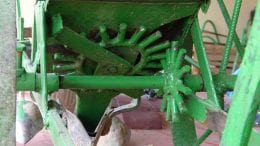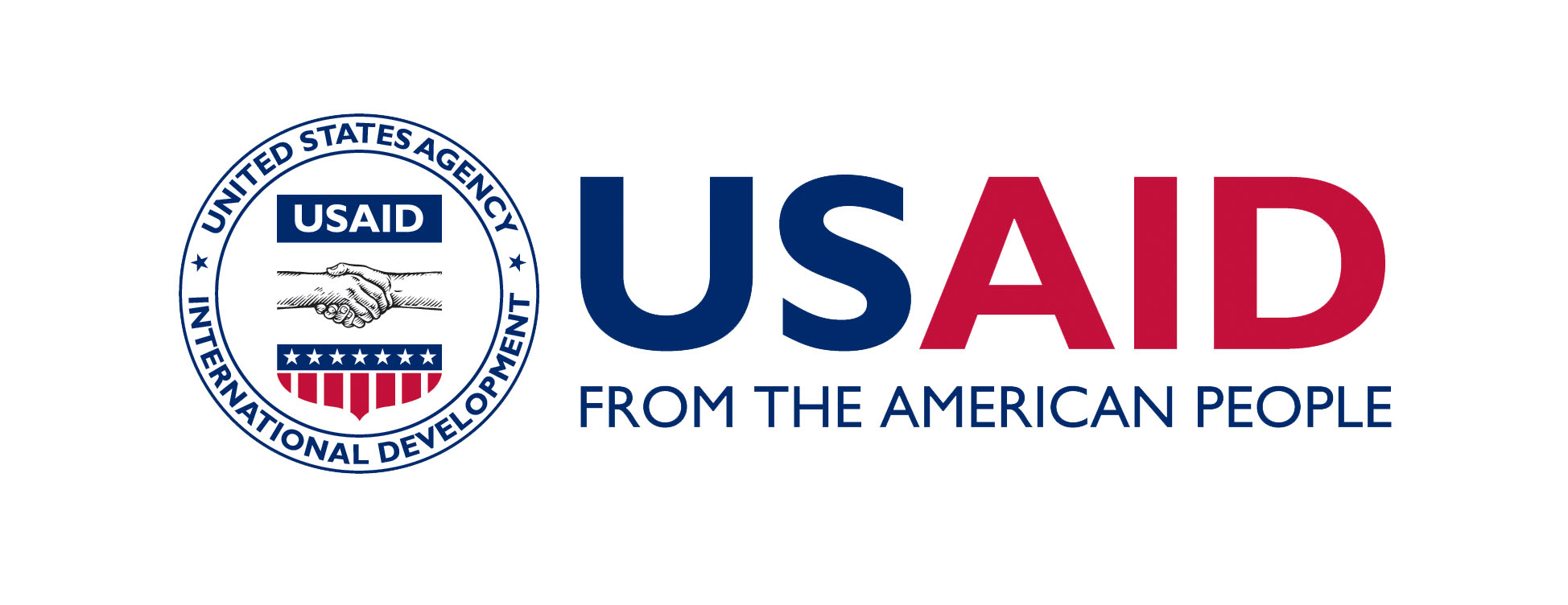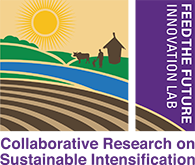The Appropriate Scale Mechanization Consortium (ASMC)-Burkina Faso has great respect for the contribution of farmers and blacksmiths in the process of adapting and promoting mechanization for sustainable agricultural intensification. Farmers understand how mechanization advances their farming system, and work alongside the local blacksmiths who understand their needs and have the skills to repair and build their tools. Long-term impacts will result from nurturing the social process whereby farmers, blacksmiths, and other stakeholders take ownership of their own development. Our partners are developing confidence in identifying and evaluating problems and potential solutions. We are refining the process of experimenting, adopting and disseminating innovations that are useful and appropriate.
On-farm innovations
On-farm innovation is a key component in the process of continuous
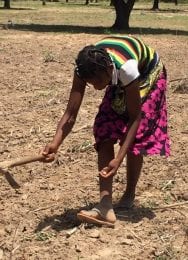
improvement of the farming system. An innovation can be physical, mechanical, biochemical, behavioral or a modification of an existing method or technology–“a new thing or method used in farming” (Nielsen, 2001)–to advance some aspect of the farming system. In Burkina Faso, advances in mechanization facilitated by the ASMC have enabled a chain of innovations in methods, techniques, and inputs for tillage, seed placement, plant population, crop rotations and crop varieties, feed processing and storage adapted to local conditions. See video: On Farm Innovations, Burkina Faso
The level of on-farm mechanization is low for smallholder farmers and many exist at a subsistence level. Farmers have incentives to innovate in order to improve their farming systems. In East Africa, farmers ranked reasons to innovate as (Reij and Waters-Bayer, 2001):
- Provide food for their family,
- Increase household income,
- Maintain and enhance soil fertility.
In Kenya and Tanzania, the most frequent on-farm innovations involved (Nielsen, 2001):
- Adopting new crops,
- Building soil fertility,
- Changes in tillage and planting,
- Improvements in animal disease and pest control.
We are working closely with the local farming community to develop technologies compatible with local economic, social, and environmental conditions. Our overall goal is to develop appropriate scale mechanization for smallholder farmers. The tools and implements need to be inexpensive, rugged and functional, and built and repaired with local materials and knowledge.
Zone tillage for soil health
The ASMC worked with local farmers and blacksmiths to develop an

inexpensive, in-line subsoiler for zone tillage. To reduce cost, we designed an open web truss to replace the expensive solid steel main beam. A novel packer/crumbler firms and levels the seedbed. Compared to a moldboard plow, the in-line subsoiler enhances soil health by conserving soil moisture, reducing tillage intensity and retaining a protective residue cover on the soil surface.
Maize planter for low-disturbance tillage
In Burkina Faso, women report that planting is one of their most difficult tasks. Maize is typically hand-planted by women and young girls using a short-handled hoe placing two seeds every 16 inches. This spacing represents a comfortable action with the hoe coupled with a small step between seed pockets. Two seeds per pocket assure the successful germination of at least one plant resulting in few skips within the row.

Animal-drawn planters introduced in West Africa decades ago were widely rejected by farmers because of their high cost and poor performance. The success of the in-line subsoiler inspired several planter innovations to improve performance in minimally disturbed soil:
- We reduced the cost of the planter by 50% by replacing the seed plate spiral bevel gear drive with an inexpensive, open spur gear drive built by local blacksmiths.
- We collaborated with the manufacturing training center for youth in Bobo Dioulasso to create mold injected planter seed plates to improve fit and functionality for maize, sorghum, millet and cowpea.
- We developed an innovative furrow opener to slice through the minimally disturbed soil while reliably placing the seed at the correct depth.
- We replaced the high crown sweeps used as furrow closers on the old-style planter with a set of small concave discs better suited to low-disturbance conservation tillage. The new discs cover the seed and roll over residue without plugging.
- We reduced the width of the press-wheel by 50%. The old-style press-wheel was suitable for plowed, pulverized soil but did not provide sufficient localized pressure to firm the soil in the narrow tillage zone created by the in-line subsoiler.
Innovations for better weed control
Weed control requires either one or two row cultivations depending on the

weed pressure. Five-shank cultivators are typical with plowed ground and little crop residue, but because our program promotes low-disturbance tillage and retention of residue on the soil surface, our lead farmer adjusted his practice to use only three shanks to reduce plugging. There were three major problems with the local cultivator: 1) it quickly plugged with crop residue, 2) draft (the pulling force required of the animals) was high because the tillage was too deep, and 3) weed control was poor because three cultivator shovels did not provide full-width root cutting. Innovations to improve weed control included:
- Working with local blacksmiths to build low-crown, low-pitch sweeps for full-row coverage at a shallow depth. The new sweeps reduced hand-labor by improving weed control and the cultivator was more stable and easier for the farmers to operate.
- The new sweeps increased the effective root cutting width by 20% while reducing implement draft and hand labor by a similar amount.
Early planting–a failed innovation
Zone tillage reduces time and labor compared to conventional tillage. Zone
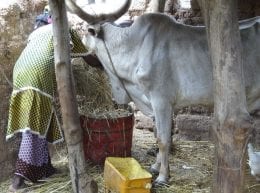
tillage can begin after the first early rains, often two- to three-weeks sooner than most farmers begin preparing a seedbed. Zone tillage captures moisture from early rains; moldboard plowing dries the soil so moisture from early rains is largely lost. Rain becomes less predictable with late planting thereby increasing the risk of drought stress during crucial periods of crop development with subsequent yield loss.
Because of the potential advantages of early planting, we set up a replicated strip trial at our innovation hub to evaluate maize response to early planting. The early-planted maize benefited from timely rain and was about 6 inches tall well before the neighbors began preparing to plant. We noticed crop damage from grazing sheep, goats and cattle, and plants flattened by cattle bedding down in the growing maize. We hired a local youth to watch over the new planting, but crop loss continued. Our host farmer was willing to keep an eye on his own animals, but was not willing to restrict access of neighboring animals until the beginning of the communal planting season. Crop loss from foraging livestock was extensive.
The ‘tragedy of the commons’ describes a situation whereby a shared resource, such as grazing land, is available to all but individual users deplete the available forage by overgrazing and acting in their own self-interest. Everyone is worse off because a few individuals act contrary to the common good. Innovations that are inconsistent with or contrary to community interests do not thrive. Successful innovations improve on-farm yield and system performance while furthering the greater community.
Outside of the growing season, cropland is ‘common land’ in Burkina Faso. All neighboring farmers enclose their animals at about the same time–when they begin planting. By planting maize early and restricting access, we were preventing the right to use ‘common land’ outside of the growing season. From a community point-of-view, this was a form of land ‘privatization’ contrary to the traditional practice of sharing grazing land after harvest. An unintended consequence of early planting was crop loss from uncontrolled grazing.
The traditional system of timing planting a few weeks after the early rains

begin softens the soil for tillage, initiates forage growth to feed the grazing animals, and then to nourish the planted crop. Early planting softened the soil and nourished the crop, but it did not provide for the animals. To succeed as a cropping system innovation, early planting would require a community-wide effort to enclose the animals at the start of early planting and to provide stored or purchased feed, both of which are in short supply or expensive near the end of the dry season.
Innovative technologies can be perfected, yet rejected
Farmers will fail to adopt even technically efficient and well-designed tools and implements if they are a poor match to local conditions. As an example, in the 1960’s and 70’s, animal-drawn, multi-purpose, wheeled tool carriers were introduced in several African countries. They had a modular design to accommodate interchangeable implements for tillage, planting, weeding, and transport on a single tool carrier. The tool carriers worked well under experimental conditions but they were widely rejected at the village level because of their high cost, heavy weight, poor maneuverability, complicated adjustment and reduced functionality compared to traditional single-use implements with simple, lighter, less expensive tool bars without wheels (Starkey, 1988).
The author is Dr. Tim Harrigan, Associate Professor, Department of Biosystems and Agricultural Engineering, Michigan State University, East Lansing, MI.
References
Nielsen, Flemming. 2001. Why do farmers innovate and why don’t they innovate more? Insights from a study in East Africa. Chapter 8 in: Farmer Innovation in Africa: A Source of Inspiration for Agricultural Development. Edited by Chris Reij and Ann Waters-Bayer. Earthscan Publications Ltd.
Reij, Chris and Ann Waters-Bayer. 2001. An initial analysis of farmer innovators and their innovations. Chapter 7 in: Farmer Innovation in Africa: A Source of Inspiration for Agricultural Development. Edited by Chris Reij and Ann Waters-Bayer. Earthscan Publications Ltd.
Starkey, Paul. 1988. Animal-Drawn Wheeled Tool Carriers: Perfected yet Rejected. A cautionary tale of development. Published by Friedr. Vieweg & Sohn Verlagsgesellschaft mbH, Braunschweig, Wiesbaden, Germany.
